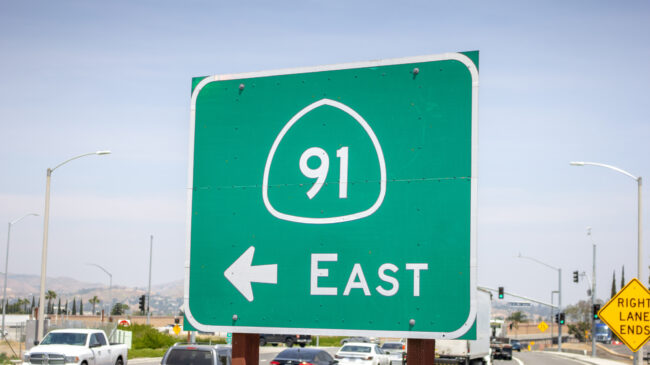For some reason, some transportation scholars in Europe and Latin America consider long-term design-build-finance-operate-maintain (DBFOM) public-private partnerships as risky endeavors that don’t offer the benefits that advocates of U.S. public-private partnerships offer to policymakers, such as significant risk transfer from taxpayers to investors and an operating culture that seeks to satisfy customers on a long-term basis.
I first encountered some of the public-private partnership skeptics with such beliefs at a U.S. conference sponsored by the Organization for Economic Co-Operation and Development’s (OECD) International Transport Forum in 2014. Researchers from Europe and Latin America argued that long-term public-private partnerships (P3s) are too often bid low to win the concession, then are renegotiated prior to reaching financial close, and often renegotiated again as things come up during the concession’s life.
In the spring of 2021, I had a debate in the pages of Regulation magazine with three Latin American researchers, who argued that most U.S. highway public-private partnerships are failures. They argued the P3s are unfairly renegotiated, don’t provide greater value for taxpayers than conventional procurement (except possibly by providing long-term maintenance), that revenue risk is too great for the market to bear, and that the cost to the government is the same whether the project is financed based on toll revenue or availability payments.
Until recently, I thought the idea that U.S. public-private partnerships are prone to failure reflected primarily skeptics’ experience with availability payment P3s, but I received a shock earlier this year when I was asked to review a paper by American researchers on the problems with U.S. public-private partnerships. The researchers examined four cases of U.S. P3 highway failures—one brownfield (Indiana Toll Road bankruptcy) and three early greenfield toll projects: the Dulles Greenway in Virginia, the State Route 91 Express Lanes in Southern California, and the South Bay Expressway bankruptcy in San Diego.
From their review of these four projects, the researchers generalized that P3 highways “often” don’t meet the projected traffic and revenue levels on which their financing depends and that their long-term agreements often need to be renegotiated. They also expressed concern that revenue-risk P3 projects were financed with too much debt and too little equity.
One problem with this negative assessment is the data. Out of 22 revenue-risk DBFOM transportation public-private partnerships financed in this country since 1993, there have been only three bankruptcies—the brownfield Indiana Toll Road, and the greenfield South Bay Expressway and Texas State Highway 130 (Segments 5 and 6).
European and Latin American analysts consider bankruptcy a form of “renegotiation,” and that might be true in those jurisdictions. But public-private partnership bankruptcy in the United States, and also in Australia, is not a renegotiation that extracts a bailout from the public partner. It’s a process that fulfills the promise to shift risk from taxpayers to private investors, who know the risk going in.
As for the claim of too-little equity in P3 projects financed by user revenues, it’s again worth looking at the data. Equity-light deals were not uncommon in the early days of long-term U.S. public-private partnerships. But in the aftermath of the Great Recession, bond buyers and rating agencies have become far more critical of the traffic and revenue projections on which financing is based.
In my long-running table of greenfield transportation P3s (the large majority of them highways), the overall average from 1993 to 2022 is 28% equity. But taking only projects financed from 2015 onward, the equity share of financed deals averages 45%. (And in case you are wondering, the overall average equity share for the 17 greenfield availability payment P3s is 6%.)
The financial soundness of long-term toll-financed highway public-private partnerships need not be endlessly debated by academics. The proof is in the ratings applied to toll revenue bonds by rating agencies, which bond buyers rely on to assess the risk of buying and holding those bonds.
In its post-COVID-19 pandemic report, “Peer Review of U.S. Managed Lanes,” Fitch Ratings reviewed 14 express toll lanes projects partly financed by toll revenue bonds—four of them financed by transportation agencies and 10 procured and financed as long-term P3s. The oldest (SR 91) was rated A+, and nearly all the others were rated BBB, still investment grade, and only one P3 was rated BBB-.
Another point from my Latin American sparring partners in 2021 is that a public agency is just as likely to be able to finance, develop, and operate a major toll highway project as a public-private partnership developer/operator. The reality in much of the United States is that toll projects are usually controversial, and transportation agencies in a metro area with little or no tolling would rather have the private sector make the case for tolling and long-term financing. Some have called this the ‘outsourcing of political will,’ but it’s a real phenomenon.
And, unlike Europe and Latin America, where revenue guarantees are common but P3 bankruptcy is not, risk transfer in U.S. highway P3s is very real. If the state has made the investment in a billion-dollar project, but it runs way over budget and the traffic and revenue projection was far too optimistic, it’s the state that takes the hit.
When I hear opponents of public-private partnerships say things like, ‘The state is better able to withstand cost overruns or serious revenue shortfalls than private investors,’ they tend to mean that the state is able to stick taxpayers with those costs.
From several decades of involvement with transportation policy and long-term P3s, I’ve concluded that only in jurisdictions where a failing P3 is allowed to go bankrupt is P3 risk transfer a reality. And to the best of my knowledge, only Australia and the United States have bankruptcy as a viable risk transfer mechanism for infrastructure megaprojects.
Lessons from European and Latin American public-private partnerships are a poor guide for U.S. transportation policy because their public-private partnerships are fundamentally different from ours.
A version of this column first appeared in Public Works Financing.

